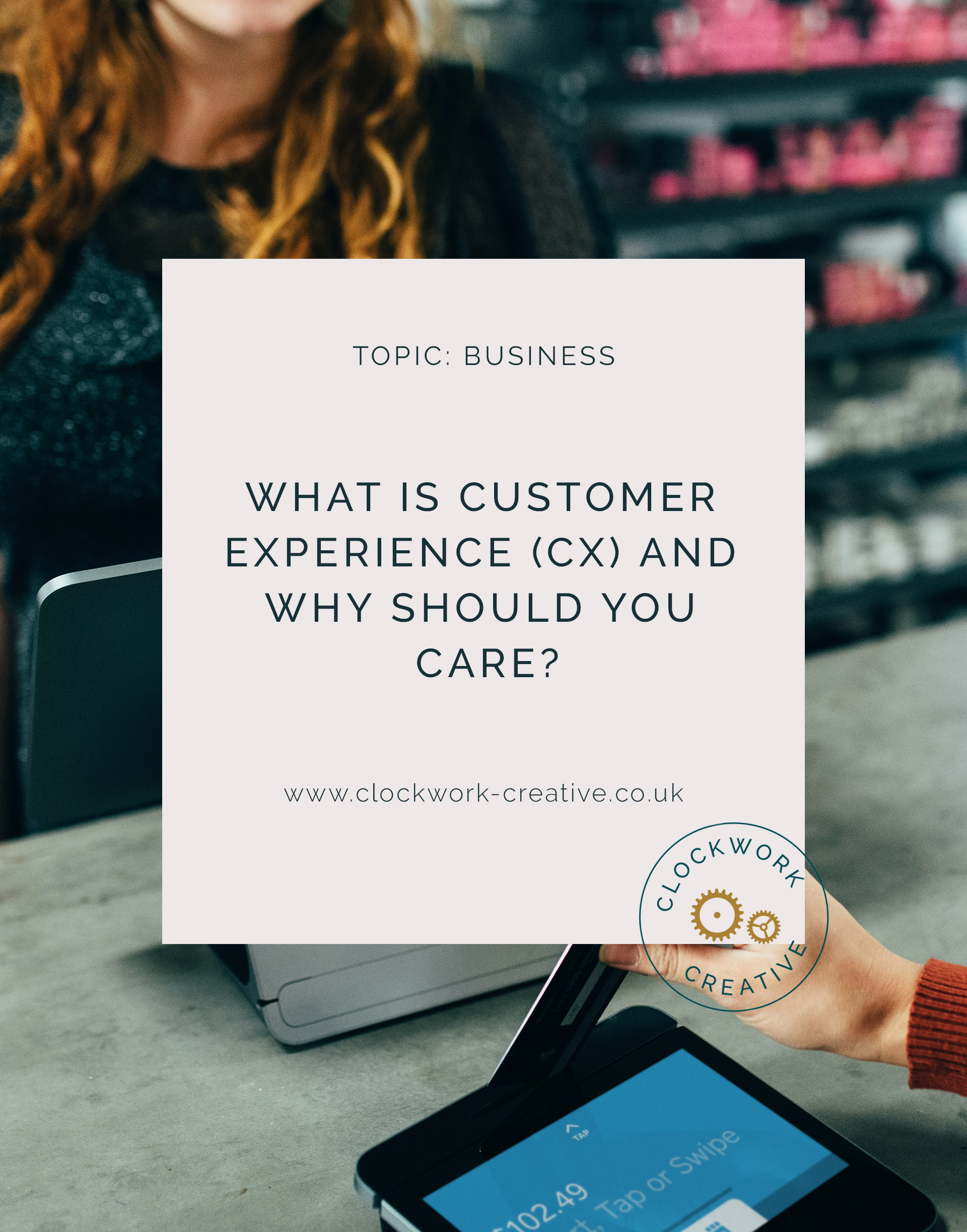In short customer experience, also known as CX, is everything a customer experiences when interacting with your brand or business.
It’s every touchpoint and interaction, from the way you answer the phone, handle a customer complaint, the usability of your website, your social media activity, the quality of your product or service and even your product packaging.
You may be thinking “but I’m a small business, do I really need to think about CX?” The answer is absolutely yes, delivering a great customer experience is important for any business.

why should you care about CX?
What a customer, or potential customer, experiences has an impact by giving them a feeling or emotional response which can create a perception, brand preference and/or drive behaviour.
Developing a customer centric approach, and delivering a relevant and consistent experience across all touchpoints that is representative of your brand, will deliver the following benefits:
- Increases conversions
- Meets or exceeds customer expectations
- Improves customer engagement and builds a relationship with your customer
- Customers are more likely to buy/use your product or service
- Leads to positive reviews and recommendations
- Encourages brand advocacy
- Reduces dissatisfaction and/or or complaints
- Competitive differentiation
keeping the customer at the heart
It’s actually much easier than you might think for a small business to get the customer experience right.
For instance, what a customer experiences with a big corporate company is likely to the responsibility of hundreds of employees, across several different departments with differing objectives and potentially in different geographical locations. It can therefore be difficult for a company of that size to deliver a consistent customer focused experience, but as a sole trader, start-up or SME it’s much easier to achieve.
If you want to deliver a great customer experience then the best place to start is by embedding a customer centric approach in your business and this starts at the top. Business owners, directors, senior executives etc need to wholeheartedly believe in this mindset, and getting the rest of your business to follow suit in a small business is often much easier than a business with several hundreds or thousands of employees. (As a side note, in my experience it’s also important you ensure that any suppliers, providers or partners you use also share your values and buy into this approach.)
By creating a culture of personalised interactions and constant improvement of your product, service, and processes, it is much easier to deliver a great customer experience consistently across every touchpoint.

creating a great cx
Once you have committed to a customer centric approach, next you will need to map the entire customer journey(s).
Unlike customer service which is only delivered at certain touchpoints, CX is the end to end experience encompassing every touchpoint. This includes the moment they first see your website listing and description on Google’s search results, the usability of your website, your response to a contact form, all the way through to using your product and a post-purchase email.
Once you have identified every touchpoint and potential interactions, you can then consider how each one is supported by the right channels, messaging, tools, people and/or processes.
Use and actively seek customer feedback
Understanding what your customers want can deliver a huge return and help to improve your CX. By using sources and tools at your disposal (see below), you can better focus your marketing spend, create messages that resonate with your audiences and deliver an experience in line with their expectations.
Sources and tools you can use to better understand your customers:
- Website and social media analytical data
- Behavioural/purchase data
- Industry/market research
- Customer/user surveys
- Customer feedback/reviews
Actionable insight
Using the data gathered from these tools and sources, you need to determine what actionable insight you can take from this data. You won’t necessarily be able to please everyone all of the time and data needs to be looked at with your customer in mind.
For example, you might find a certain page on your website has a high dropout rate. But if you have an educational website, the user may have gathered the information they need and have completed what they came on your website to do, in which case the dropout isn’t a negative. Whereas if you have an ecommerce website and users are dropping out midway through a purchase journey, then you need to investigate and take action.
Once you have identified negative trends or particular touchpoints/interactions causing friction, you can take action and make impactful changes.
CONCLUSION
Over the years as I’ve grown increasingly passionate about CX. My past experience within marketing and digital teams means I’ve created online and offline experiences that have satisfied, engaged and at times even wowed audiences. But no matter how good part of your experience is, if other parts don’t match and deliver against expectations then the good part is quickly forgotten and the overall experience is poor. Leaving the customer with a negative perception of your brand and business.
I hope you’ve found this blog post useful and I demonstrated why giving thought to your CX is so important regardless of your business size or industry. I’d love to your thoughts on my post or about CX, so please do email me on hello@clockwork-creative.co.uk.





